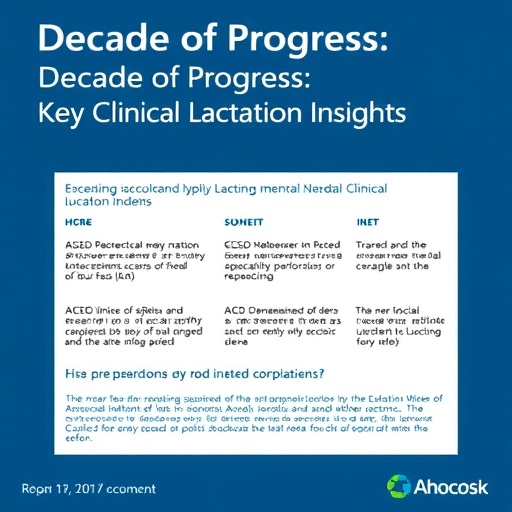In recent years, substantial advancements have been made in the domain of clinical lactation studies, particularly within countries with well-established regulatory frameworks. These strides reflect a growing recognition of the critical need to understand drug safety and exposure in women of childbearing potential (WOCBP) who are breastfeeding. However, while advanced economies have made commendable progress, the global regulatory landscape remains uneven, exposing significant gaps in low-income regions, most notably across Africa. The challenge primarily lies in the capacities of National Medicines Regulatory Authorities (NMRAs) in these countries, many of which struggle to fulfill their core regulatory functions effectively, largely due to resource constraints and limited infrastructural support.
According to a 2017 World Health Organization (WHO) report, although many African nations have established NMRAs, the majority lack the capacity for comprehensive regulatory oversight. These agencies frequently rely on evaluations and approvals from more established international regulatory bodies such as the U.S. Food and Drug Administration (FDA), the European Medicines Agency (EMA), and Japan’s Pharmaceutical and Medical Device Agency (PMDA). This dependency underscores a significant discrepancy in the safeguarding of maternal and infant health, as local regulatory bodies are not always able to undertake critical risk assessments or enforce policies tailored to their demographic and healthcare realities.
Empowering NMRAs in low-income countries to perform detailed drug safety evaluations during clinical development phases can have transformative impacts. Doing so would not only enhance the safety monitoring of medications in lactating women but also potentially stimulate pharmaceutical sponsors, including industry leaders and academia, to prioritize lactation studies. Such commitment is crucial for therapeutics and vaccines intended for widespread use among breastfeeding women, encompassing antibiotics, antiretrovirals, antimalarials, analgesics, antihypertensives, and antidepressants, among others. Currently, the dearth of focused lactation studies within drug development pipelines undermines evidence-based clinical decision-making for this population.
The integration of lactation-focused pharmacokinetic and pharmacodynamic assessments during drug development stages demands sophisticated methodologies and interdisciplinary collaboration. These studies must account for the unique physiological changes occurring during lactation, which can significantly alter drug metabolism, distribution, and excretion. Moreover, understanding drug transfer into breast milk and the resultant infant exposure is essential for developing comprehensive safety guidelines. This complexity is further compounded by variations in genetic, environmental, and nutritional factors prevalent among different populations worldwide, necessitating a diversified approach to clinical research.
Global drug development is evolving, with concerted efforts to diversify clinical trials by age and sex to generate robust, inclusive data. Yet, lactating women remain underrepresented in clinical research, often excluded from crucial studies due to safety concerns and ethical complexities. This exclusion results in a significant knowledge gap, leaving healthcare providers to make prescribing decisions based on limited or indirect evidence. Addressing this gap requires both regulatory encouragement and innovative study designs that balance the safety of lactating women and their infants with scientific rigor and ethical responsibility.
In this context, the role of international regulatory harmonization cannot be overstated. Aligning standards and guidelines across regulatory bodies can ensure that data generated in one region is acceptable and actionable in others, facilitating more rapid and widespread implementation of findings. For low-income countries, alignment with global standards could serve as a catalyst for capacity enhancement and reduce the burden of duplicative regulatory reviews. However, without concurrent investment in local infrastructure, training, and resources, such harmonization efforts risk perpetuating dependency rather than fostering autonomy.
Pharmaceutical companies are intrinsically motivated to incorporate lactation studies into their development pipelines if encouraged by clear regulatory expectations. The inclusion of lactation data not only improves drug labels and patient safety information but also ultimately broadens market applicability. Furthermore, academic research institutions play a pivotal role in advancing the fundamental science underlying drug transfer into human milk, as well as in developing novel analytical techniques and models. Enhanced collaboration between industry, academia, and regulators is critical for driving progress in this field, particularly to address the unique needs of lactating women in diverse populations.
Attention to lactation pharmacology gains even greater urgency in the face of global health threats such as infectious disease outbreaks and pandemics. Vaccines and therapeutics deployed during these times must be evaluated for safety in lactating women to prevent unintended consequences and to promote confident breastfeeding practices. The ongoing evolution of drug innovation therefore mandates adaptive regulatory frameworks that can accommodate emergent scientific insights and real-world data from diverse populations, including those in resource-limited settings.
For low-income countries, targeted support and technical assistance from international agencies, donor organizations, and global health initiatives are vital. Strengthening NMRAs can involve capacity building through training, access to analytical technologies, development of local clinical trial networks, and establishment of pharmacovigilance systems that include breastfeeding populations. Such initiatives would foster evidence-based policymaking, reduce legislative gaps, and enhance the overall quality of maternal and infant healthcare services.
In conclusion, the future of clinical lactation research hinges on bridging the gap between regulatory capacities in advanced economies and those in resource-limited settings. Strategic investments, international partnerships, and scientific innovation are required to ensure that all lactating women, regardless of geography, benefit from medicines and vaccines that have been thoroughly evaluated for safety during breastfeeding. Without this, the global health community risks perpetuating inequities and failing some of its most vulnerable populations.
As research continues to evolve, the broader integration of clinical lactation data into drug development and regulatory approval processes will set a new standard for inclusive, patient-centered healthcare. It will also underscore the imperative that breastfeeding mothers are no longer overlooked but are instead recognized as a distinct and critical cohort within pharmacological research. This paradigm shift will ultimately contribute to safer medication use, improved infant health outcomes, and strengthened public trust in pharmaceutical products administered during lactation.
The challenge ahead is formidable but surmountable with coordinated efforts that embrace scientific rigor, ethical principles, and an unwavering commitment to maternal and infant health across all regions of the world. By harnessing global expertise and local insights, the next decade could well become a watershed moment for advancing the field of clinical lactation studies and regulatory science.
Subject of Research:
Clinical lactation studies focusing on drug safety and exposure profiles in breastfeeding women, with an emphasis on regulatory challenges in low-income countries.
Article Title:
Clinical lactation studies. Acting on key recommendations over the last decade.
Article References:
Rowland Yeo, K., Gerhart, J., Sawant-Basak, A. et al. Clinical lactation studies. Acting on key recommendations over the last decade. npj Womens Health 3, 19 (2025). https://doi.org/10.1038/s44294-025-00064-0
Image Credits:
AI Generated
Tags: Africa regulatory challengesbreastfeeding drug safetyclinical lactation advancementscomprehensive regulatory oversightglobal health disparitiesinternational regulatory bodiesmaternal and infant healthNational Medicines Regulatory Authoritiesregulatory frameworks in lactationresource constraints in healthcareWHO report on lactationwomen of childbearing potential





